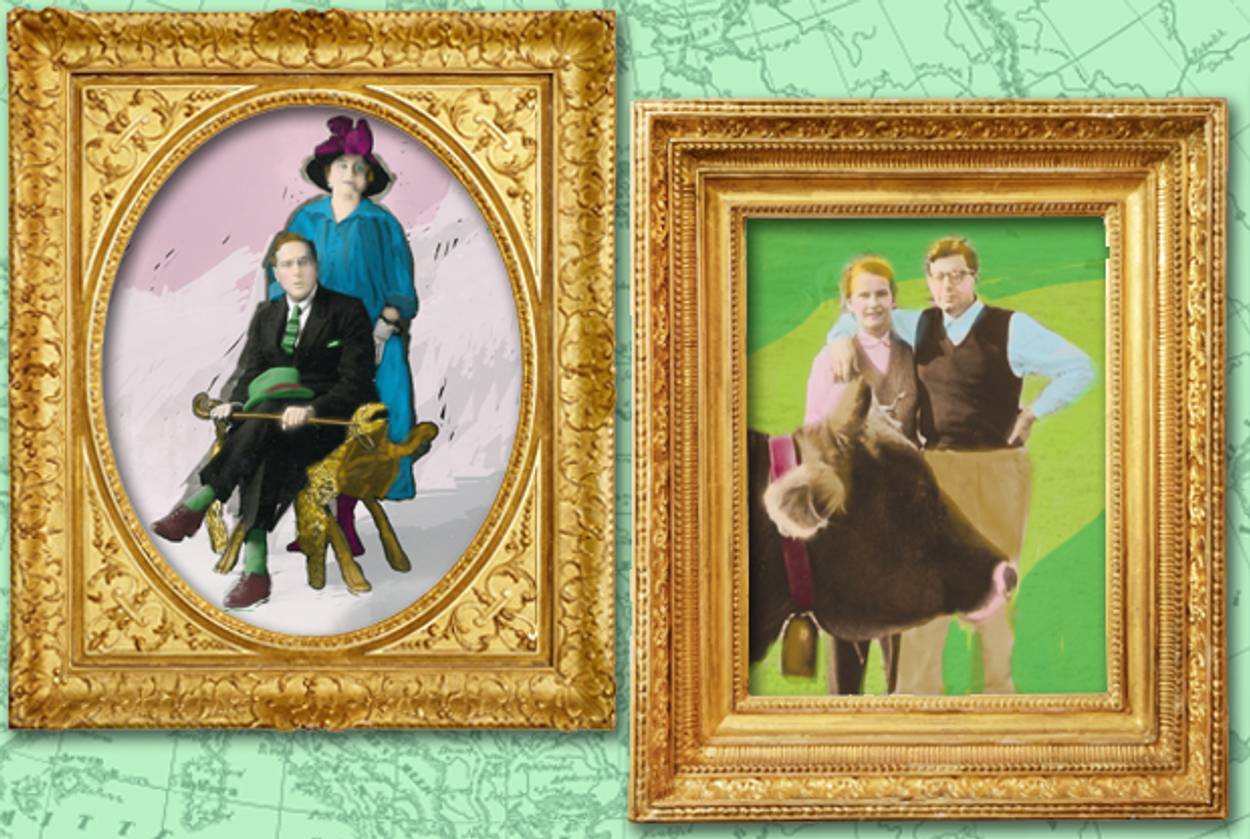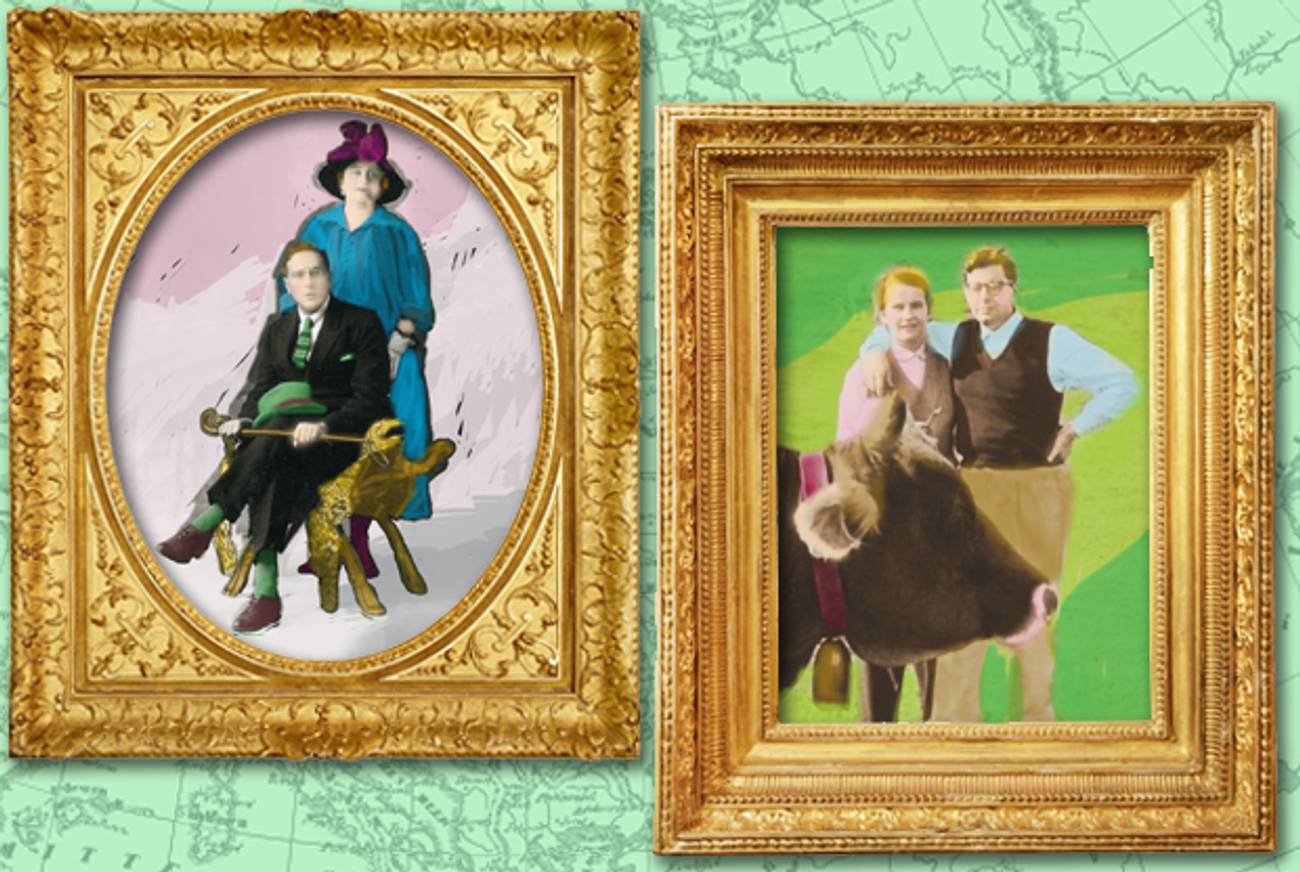Elements of Stille
Alexander Stille never stopped investigating his parents, as shown by his new memoir about his World War II heritage




All children start out as their parents’ biographers and personal detectives. We need to figure out what happened in the mysterious time before we were born and what strange miracle happened to bring this mother and this father together so that we could exist. Most of us eventually settle on a good enough answer or get tired of asking the question and move on to create our own adult lives. Alexander Stille is the exceptional child who never stopped investigating his parents, and his wonderful new book, The Force of Things: A Marriage in War and Peace, is the final report on what he discovered over a lifetime of asking questions.
If Stille couldn’t stop asking who his parents really were, it is partly because he is a journalist, whose nature is to get to the bottom of things; his earlier books include several studies of Italian history and politics. More important, however, was the blatant mismatch between his mother and father. Their marriage, as he witnessed it growing up, was an ongoing disaster, full of fights, humiliations, infidelities and attempts at divorce. Two less compatible people could hardly be invented:
My mother loved gardening and being out in the country; my father felt lost outside of any city with fewer than three million people. My mother drove; my father was driven. … My mother was a gracious hostess and believed in making people feel at ease; my father enjoyed challenging people and freely insulted people who said things he thought were foolish, especially if they were my mother’s friends. My mother almost always spoke ill of my father; my father almost invariably sang my mother’s praises.
“As marriages go, it was a stormy one,” Stille sums up with considerable understatement. But it wasn’t only their personalities that made his mother and father an unlikely match—or, rather, their personalities could be seen as the expression of their utterly different family histories. Elizabeth Bogert, Stille’s mother, grew up in Chicago as the daughter of a prominent law professor—her father was the author of a standard legal work called “Bogert on Trusts”—and a mother active in local politics. She was beautiful, charismatic, impulsive, and utterly devoted to her personal freedom, in ways that often brought her into conflict with her distant, authoritarian father.
When Stille writes about his mother’s college years at Cornell in the 1930s—full of fraternity parties and boyfriends and escapades—we could be reading a screenplay for a wholesome Hollywood comedy of the same period. “She had the freedom, naturalness, irreverent wit, and beauty of … Rosalind Russell in His Girl Friday [or] Jean Arthur in Mr. Smith Goes to Washington,” Stille writes, freely turning his mother into an icon or a myth. Later she studied art and design under some of the former masters of the Bauhaus, and married one of her teachers, a much older Jewish painter named Bob Wolff.
The early life of Mikhail Kamenetzki, as Stille’s father was originally known, could not have been more different. He was born in 1919 to a formerly prosperous Russian Jewish family, during the turmoil and terror of the Russian Civil War. While he was still an infant, his parents fled Russia for Latvia, before making their way at last to Italy. There Mikhail, now Michele, grew up in relative comfort—his father managed to continue to practice dentistry without a license—and became a brilliant, highly promising student.
For the first 10 years of his life, Stille writes, Michele had no idea his family was Jewish. His parents, familiar with the danger of Jewish life, wanted to hide his vulnerability from him.
But in the late 1930s, the advent of Mussolini’s anti-Semitic laws, adopted in imitation of Hitler, suddenly foreclosed Michele’s career and put his whole family in danger. In the fall of 1941, at the last possible moment, the Kamenetzkis got a visa for the United States and managed to escape what would very likely have been their deaths in the Holocaust. Arriving in New York, Michele was promptly called up for the U.S. Army—allowing him to become an American citizen—and he returned to Italy as a member of the occupying Allied forces. After the war, he became the New York correspondent for the Italian newspaper Corriere della Sera, using the pseudonym Ugo Stille. He would continue to hold this job for the next 40 years, becoming one of the legendary journalists of his time.
It was as Michael Stille, an Americanized Italian Russian Jew with an untraceable last name, that he met Elizabeth Wolff, at a party in 1948 to celebrate the publication of Truman Capote’s debut novel. The attraction between them was instantaneous, as Elizabeth later told her son in a series of deathbed interviews: “We talked and talked. It got later and later, two or three in the morning, something like that. And he said he would walk me back. … All of a sudden in the middle of Sutton Place he began to kiss me passionately and make this very big scene.” Elizabeth’s already strained marriage quickly collapsed. She went to the Virgin Islands to obtain a quickie divorce and conducted a passionate correspondence with Michael, in which their son detects hints of the mistrust and incompatibility that would plague their marriage. By the time Alexander was born, in 1957, the romance was long gone, and only the struggles were apparent.
Few people could read their parents’ love letters with equanimity, much less listen, as Stille did, to their own mother’s uncensored recollections of her early sex life and miserable marriage. There is a certain journalistic detachment at work here, but also considerable emotional courage. Stille has the confidence to write about his parents as flawed human beings, with a minimum of blame or recrimination.
He also has the historical imagination to evoke their very different backgrounds with equal vividness. Inevitably, it is the Kamenetzki side of the family that dominates The Force of Things. As Jewish refugees from fascism, they offer a direct connection to the most momentous events of the 20th century. The young Michele, Stille explains, fell in at his university with a group of left-wing anti-fascist intellectuals, including his best friend, a poet named Giaime Pintor. Pintor would end up being killed while fighting as a partisan in 1943, leaving behind a letter explaining his motives that became a classic document in modern Italian history. The pseudonym Ugo Stille, we learn, was originally shared by Pintor and Kamenetzki, for their alternating contributions to a newspaper column; in adopting the name, Stille’s father paid lifelong tribute to his martyred friend.
But the Kamenetzki legacy also took on less heroic forms, which Stille writes about unblushingly. His father, he recalls, was an incorrigible collector of newspapers, unable to throw anything away and furious if anything was moved. But his father’s sister, known as Lally, was a hoarder on a psychopathic scale. One of the book’s best set-pieces involves Stille’s horrified discovery that his aunt had filled her apartment from wall to wall with archeological layers of trash, leaving almost no room to move. To him, the connection between his aunt’s hoarding and her refugee childhood is plain:
This mess was the expression of a world of darkness, despair, and irrational pain, the fearful holding on to everything as a bulwark against everything that was lost. It was … the detritus of a family, the first wave of stateless citizens who had crossed the major tragedies of twentieth-century Europe: the Bolshevik revolution, the Fascist revolution, the racial laws, World War Two. This apartment was its terminus, the storage depot at the end of the line.
The symbolism is all too perfect when Stille’s mother takes charge of cleaning the apartment, bringing her American love of order and cleanliness to bear on the European Jewish past. Yet though he has a tendency to cast his parents as symbolic opposites—light and dark, New World and Old—Stille also makes clear that the Bogert family was no paradise either. We learn that his mother’s father, the law professor, was a poor orphan who made his way into the middle class thanks to an iron self-discipline that left lasting marks on his character. He seems to have disliked his oldest child, Elizabeth, and even suspected that he might not be her real father. Then, when she was a teenager, Elizabeth recalls her father being inappropriately sexual with her—in particular, one occasion when he asked her to dance and she discovered that he had an erection. Stille traces much of his mother’s sexual impulsiveness and need for male attention to this troubled father-daughter relationship.
At the end of The Force of Things, Stille includes a “coda” in which he relates a nightmare he had when completing the book. He dreamed that “a dead body turned up unexpectedly in my hotel room. ‘I didn’t kill this person,’ I thought, ‘but everyone will think I did.’ ” The dream interprets itself: Putting your family in a book, Stille feels on some primal level, is akin to murdering them. He acknowledges that there is some truth to this charge: “The writer is taking something that belongs to several people, appropriating it for himself, and turning it into something that inevitably feels alien and wrong to those who have lived some of those events, but from inside another skin.” But there is no other way that memoir can be written; and as The Force of Things shows, the best memoirs transcend solipsism to become genuine histories of unknown lives.
***
Like this article? Sign up for our Daily Digest to get Tablet Magazine’s new content in your inbox each morning.
Adam Kirsch is a poet and literary critic, whose books include The People and the Books: 18 Classics of Jewish Literature.
Adam Kirsch is a poet and literary critic, whose books include The People and the Books: 18 Classics of Jewish Literature.